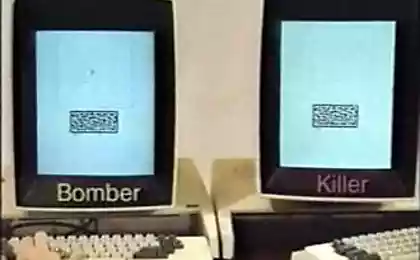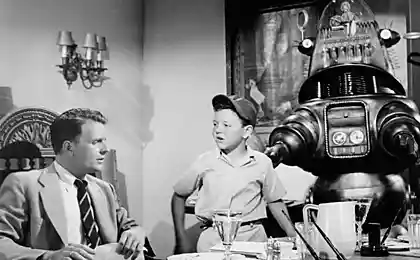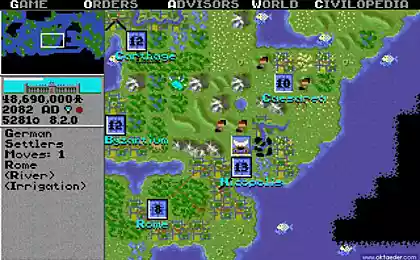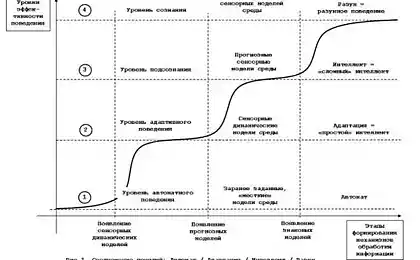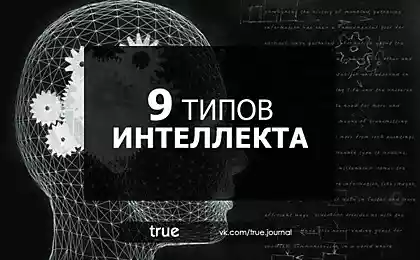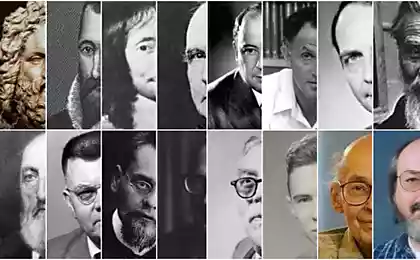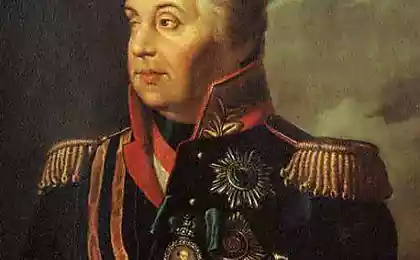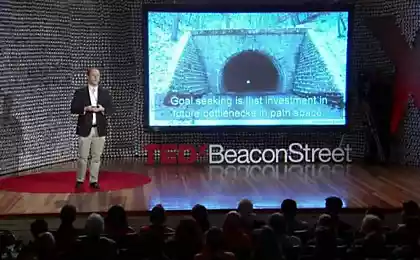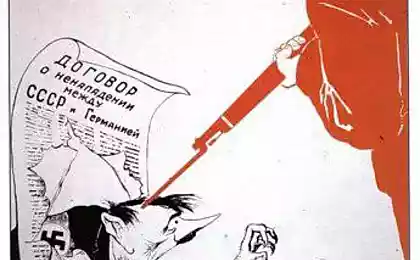695
As a computer program almost unleashed a thermonuclear war
Sixty four million seven hundred fifty four thousand one hundred seventy six
Perhaps someone of our readers are familiar with the film "war games", released in 1983? This film is about a computer "game" with the potential to start thermonuclear war. However, it appears that this movie not science fiction. It is actually based on real events of 1979, when programmers Command aerospace defense of North America (abbreviated NORAD) almost started world war III by mistake by running a computer simulation of a nuclear attack by the Soviet Union.
Certainly among our readers there are people who have heard about this story. But there are those who did it not to hear. Therefore, let us briefly describe the essence of events in that time.
Early on the morning of November 9, 1979, Zbigniew Brzezinski, who served as national security Advisor under President Jimmy Carter, was awakened by a terrible phone call. According to the information received by NORAD, the Soviet Union launched 250 Intercontinental ballistic missiles in the direction of America. After the first call the phone rang again Brzezinski, and NORAD officials reported that the missiles already released 2200. It was a moment that you were afraid of every American who lived during the cold war, while the American government had not had the opportunity (or desire) to inform his people about the imminent imminent death around the world.
As reported by portal Gizmodo, leading a short version of this story, even Brzezinski did not Wake his sleeping wife. He knew that everyone he ever knew will soon die, and therefore saw no sense in alarming her. The only thing he thought, before taking these steps, it is about a dystopian post-apocalyptic world, which will have to face all of humanity very soon.
"I knew that if this message were true, then for about half an hour I, all my relatives and friends, all of Washington and most of America will be erased from the face of the Earth. And I wanted to make sure that someone will disappear with us for the company", — said Brzezinski his biographer in 2011.
In other words, Brzezinski wanted to make sure that if the attack of the USSR was real, then its consequences would have been much more than just a little hole in the background of the Earth. If the US really threatened the end, America would try to pick the "commies" with them.
However, to the following measures — to direct a call to the President of the United States and the subsequent beginning of a thermonuclear war — Brzezinski wanted to confirm heading towards US missiles. In the past, were false alarms, but this seemed more real. Fortunately, before informing President Carter, Brzezinski received the third call in which he said that none of the other systems (besides NORAD) did not record signals of this attack.
So what happened? And why did this happen? And the following happened: a computer program intended to simulate a nuclear war between the United States and the Soviet Union was filed through a network of NORAD. In the result, the host computer NORAD, as well as all the people who worked in the network accept the event of a real attack from the enemy.

Illustration of the air command post. The picture 1973, National security archive, USA
Despite the fact that the President was not informed in real time and learned about the incident only after some time, many taken further steps could really provoke a Third world war. In the sky rose ten American and canadian fighters, who have been facing a mission that can change life on our planet for many, many generations to come.
It should be noted that this case is connected with one very ironic episode. In the event of nuclear war in the 1960s, the company developed a plan. In case of threat the President had to Board a special plane and give instructions on further actions from the air. The irony is that this aircraft (which is a mobile air command center) in the history of NORAD really took off, only without the President on Board.
When the 1979 incident for the first time received wide publicity in the American press, it tried to file it so that actually no real security threats to the United States, he had no idea. Nevertheless, the same Newspapers became obvious and clear that the President was not timely informed about the incident (which could at least somehow to reassure the public), not to mention the fact that in due time was informed the national security Advisor, decided finally to stay home and think about the response and about those whom he loves and is loved.
In the book "Cybersecurity: background" (Cybersecurity: A Pre-history) authored by Michael Warner this incident is described by a very correct observations "Life imitates Art far more than Art imitates Life", made by the writer Oscar Wilde.
"In the case of "imitation art of living" popular Thriller "war games" in 1983 is quite realistic adapts similar scenario. President Ronald Reagan was so impressed with the film and Matthew Broderick played a young hacker breaking into the computer systems of national security that even mentioned the story at a meeting of members of Congress and senior staff of the us army. As for the expression "life imitates art", the high school students from Milwaukee, inspired by the same film organized hacker group called "414" (the first digits of the telephone area code) and proved that summer that even ordinary students can access the nonsecure protocols of the military departments".
How was it possible to defend against such potential false alarms, such as the one that occurred in 1979? One solution was the construction of a simulation test for NORAD center cost $ 16 million to exclude the use of their internal networks for modeling of potential threats. As mentioned in the reports, it was absolutely necessary measure of caution to avoid the possibility of false alarms again.
However, in subsequent years, false alarms and the Soviet Union, and the United States repeatedly witnessed false alarms caused by imperfect equipment, machinery and software. In 1980 alone, these false reports were at least three.
Another occurred on the night of 26 September 1983 in the USSR. Who was on duty at the command post Serpukhov-15, Lieutenant Colonel Stanislav Petrov actually stopped the beginning of world war III. At that time, the cold war reached its critical tension. To the limit situation escalated after shot down over the territory of the Soviet Union twice violated the airspace of South Korean passenger "Boeing-747".
At the command post Serpukhov-15 received information from the running year earlier space-based surveillance system "Eye". When threatened with missile attack, the government immediately made aware, and then took the decision to further action and retaliation.
So, that night computer Petrov reported the incident to launch Intercontinental ballistic missiles (ICBMs) with American bases in the USSR. However, quickly analyzing the situation, Petrov decided that this is a mistake and false positives. The fact that the computer showed that "starts" were produced from a single point and consisted of only a few ICBMs. As then it became known, the cause of false positives was the illumination of the sun light sensor satellite, which is reflected by high-altitude clouds. After this incident cosmic system upgraded to avoid such false alarms.
Interesting here is that because military and political secrecy about the incident became widely known only in 1993, when a brief history of these events was published by the commander at the time of the incident the Troops of anti-missile and anti-space defense of the USSR Y. V. Votintsev. In 2006, Stanislav Petrov was invited to the headquarters of the UN, where he was awarded the special award of the international organization "Association of world citizens" with the engraved inscription: "the Man who prevented a nuclear war."
In the modern world the two stories described above become particularly relevant when it comes to games with artificial intelligence. I would not want to live in a world where the machine will have to answer the question of what distinguishes a virtual world from reality. In my humble opinion, the only possible answer would be: is this difference there?
Good advice: play better chess! published
P. S. And remember, just changing your mind — together we change the world! ©
Source: hi-news.ru
Perhaps someone of our readers are familiar with the film "war games", released in 1983? This film is about a computer "game" with the potential to start thermonuclear war. However, it appears that this movie not science fiction. It is actually based on real events of 1979, when programmers Command aerospace defense of North America (abbreviated NORAD) almost started world war III by mistake by running a computer simulation of a nuclear attack by the Soviet Union.
Certainly among our readers there are people who have heard about this story. But there are those who did it not to hear. Therefore, let us briefly describe the essence of events in that time.
Early on the morning of November 9, 1979, Zbigniew Brzezinski, who served as national security Advisor under President Jimmy Carter, was awakened by a terrible phone call. According to the information received by NORAD, the Soviet Union launched 250 Intercontinental ballistic missiles in the direction of America. After the first call the phone rang again Brzezinski, and NORAD officials reported that the missiles already released 2200. It was a moment that you were afraid of every American who lived during the cold war, while the American government had not had the opportunity (or desire) to inform his people about the imminent imminent death around the world.
As reported by portal Gizmodo, leading a short version of this story, even Brzezinski did not Wake his sleeping wife. He knew that everyone he ever knew will soon die, and therefore saw no sense in alarming her. The only thing he thought, before taking these steps, it is about a dystopian post-apocalyptic world, which will have to face all of humanity very soon.
"I knew that if this message were true, then for about half an hour I, all my relatives and friends, all of Washington and most of America will be erased from the face of the Earth. And I wanted to make sure that someone will disappear with us for the company", — said Brzezinski his biographer in 2011.
In other words, Brzezinski wanted to make sure that if the attack of the USSR was real, then its consequences would have been much more than just a little hole in the background of the Earth. If the US really threatened the end, America would try to pick the "commies" with them.
However, to the following measures — to direct a call to the President of the United States and the subsequent beginning of a thermonuclear war — Brzezinski wanted to confirm heading towards US missiles. In the past, were false alarms, but this seemed more real. Fortunately, before informing President Carter, Brzezinski received the third call in which he said that none of the other systems (besides NORAD) did not record signals of this attack.
So what happened? And why did this happen? And the following happened: a computer program intended to simulate a nuclear war between the United States and the Soviet Union was filed through a network of NORAD. In the result, the host computer NORAD, as well as all the people who worked in the network accept the event of a real attack from the enemy.

Illustration of the air command post. The picture 1973, National security archive, USA
Despite the fact that the President was not informed in real time and learned about the incident only after some time, many taken further steps could really provoke a Third world war. In the sky rose ten American and canadian fighters, who have been facing a mission that can change life on our planet for many, many generations to come.
It should be noted that this case is connected with one very ironic episode. In the event of nuclear war in the 1960s, the company developed a plan. In case of threat the President had to Board a special plane and give instructions on further actions from the air. The irony is that this aircraft (which is a mobile air command center) in the history of NORAD really took off, only without the President on Board.
When the 1979 incident for the first time received wide publicity in the American press, it tried to file it so that actually no real security threats to the United States, he had no idea. Nevertheless, the same Newspapers became obvious and clear that the President was not timely informed about the incident (which could at least somehow to reassure the public), not to mention the fact that in due time was informed the national security Advisor, decided finally to stay home and think about the response and about those whom he loves and is loved.
In the book "Cybersecurity: background" (Cybersecurity: A Pre-history) authored by Michael Warner this incident is described by a very correct observations "Life imitates Art far more than Art imitates Life", made by the writer Oscar Wilde.
"In the case of "imitation art of living" popular Thriller "war games" in 1983 is quite realistic adapts similar scenario. President Ronald Reagan was so impressed with the film and Matthew Broderick played a young hacker breaking into the computer systems of national security that even mentioned the story at a meeting of members of Congress and senior staff of the us army. As for the expression "life imitates art", the high school students from Milwaukee, inspired by the same film organized hacker group called "414" (the first digits of the telephone area code) and proved that summer that even ordinary students can access the nonsecure protocols of the military departments".
How was it possible to defend against such potential false alarms, such as the one that occurred in 1979? One solution was the construction of a simulation test for NORAD center cost $ 16 million to exclude the use of their internal networks for modeling of potential threats. As mentioned in the reports, it was absolutely necessary measure of caution to avoid the possibility of false alarms again.
However, in subsequent years, false alarms and the Soviet Union, and the United States repeatedly witnessed false alarms caused by imperfect equipment, machinery and software. In 1980 alone, these false reports were at least three.
Another occurred on the night of 26 September 1983 in the USSR. Who was on duty at the command post Serpukhov-15, Lieutenant Colonel Stanislav Petrov actually stopped the beginning of world war III. At that time, the cold war reached its critical tension. To the limit situation escalated after shot down over the territory of the Soviet Union twice violated the airspace of South Korean passenger "Boeing-747".
At the command post Serpukhov-15 received information from the running year earlier space-based surveillance system "Eye". When threatened with missile attack, the government immediately made aware, and then took the decision to further action and retaliation.
So, that night computer Petrov reported the incident to launch Intercontinental ballistic missiles (ICBMs) with American bases in the USSR. However, quickly analyzing the situation, Petrov decided that this is a mistake and false positives. The fact that the computer showed that "starts" were produced from a single point and consisted of only a few ICBMs. As then it became known, the cause of false positives was the illumination of the sun light sensor satellite, which is reflected by high-altitude clouds. After this incident cosmic system upgraded to avoid such false alarms.
Interesting here is that because military and political secrecy about the incident became widely known only in 1993, when a brief history of these events was published by the commander at the time of the incident the Troops of anti-missile and anti-space defense of the USSR Y. V. Votintsev. In 2006, Stanislav Petrov was invited to the headquarters of the UN, where he was awarded the special award of the international organization "Association of world citizens" with the engraved inscription: "the Man who prevented a nuclear war."
In the modern world the two stories described above become particularly relevant when it comes to games with artificial intelligence. I would not want to live in a world where the machine will have to answer the question of what distinguishes a virtual world from reality. In my humble opinion, the only possible answer would be: is this difference there?
Good advice: play better chess! published
P. S. And remember, just changing your mind — together we change the world! ©
Source: hi-news.ru
